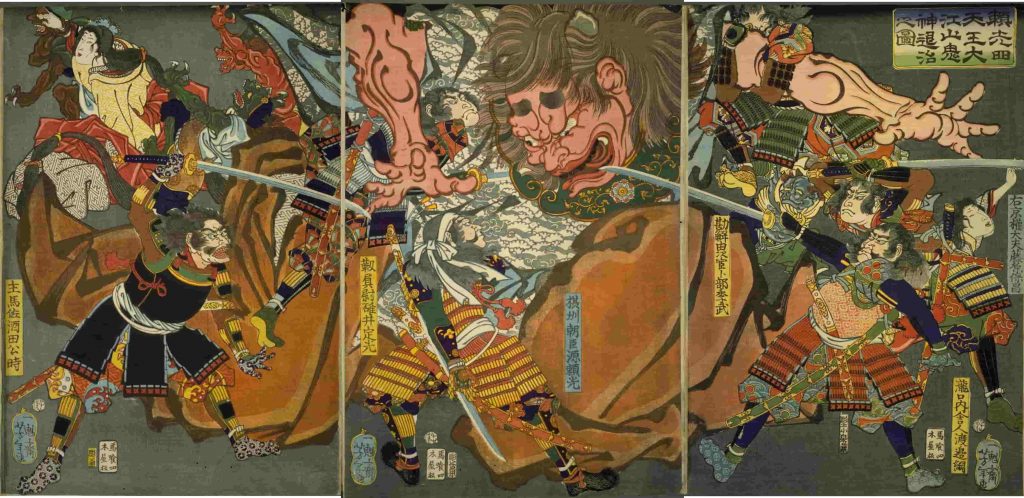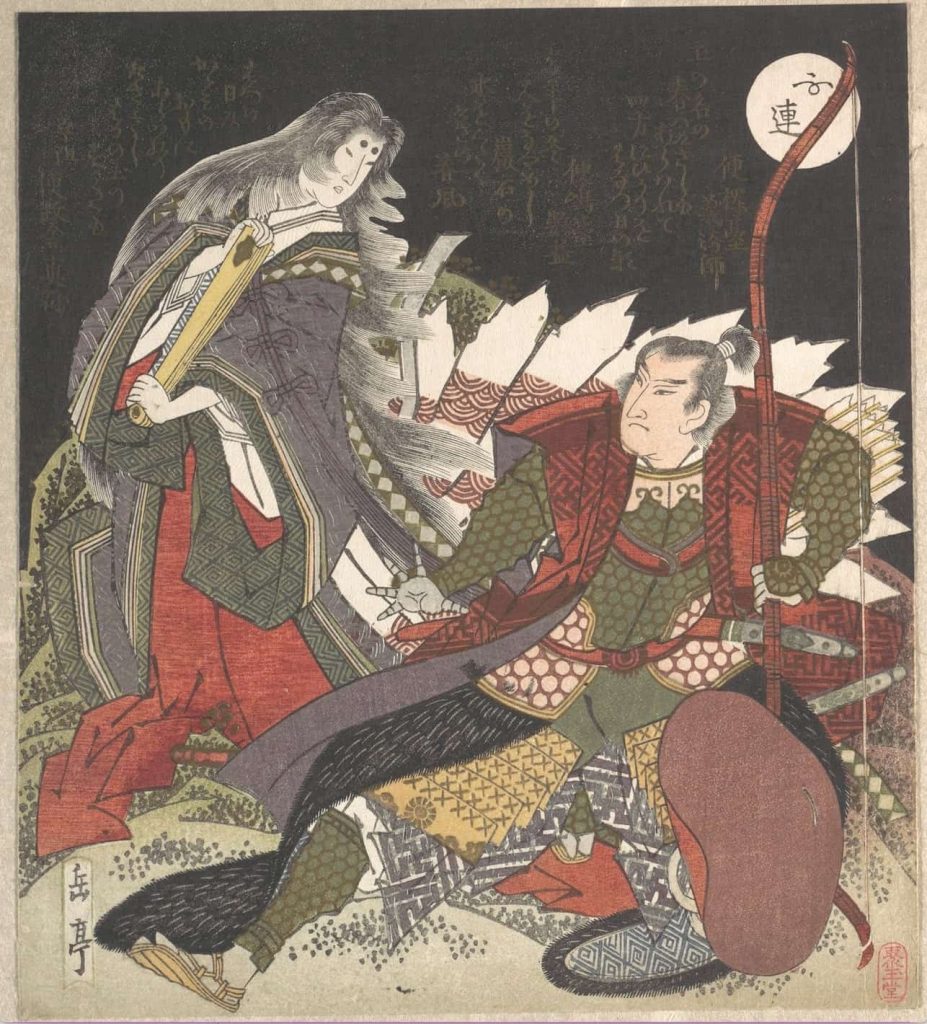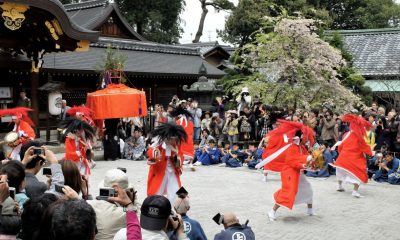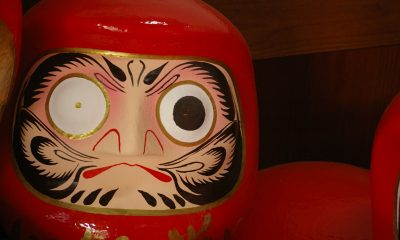Culture
Why the Dearth of Vampires in Japan?
Japan's spirit world teems with supernatural beings, but the closest equivalent to vampires might be a fox spirit in the guise of a beautiful temptress.
Published
2 weeks agoon
By
John Carroll
While browsing news stories on the Internet a couple of days ago, I was brought up short by the following headline: "A woman found dead in a church with no blood in her body may have been a TikToker hunting for ghosts, police say." Wow! Vampires? Now if that headline doesn't pique a reader's interest I don't know what would.
Seems that on April 6, a local resident in the village of La Salle in Northern Italy's Aosta Valley stumbled upon the decomposing body of a young woman dressed like a vampire in an abandoned church.
The corpse, drained of blood, was curled up in a fetal position and there was a bag of pink marshmallows and some groceries lying nearby.
Police investigators said that the victim, identified as a 22-year-old French woman from the Lyon area, had been dead for several days. She had apparently died from loss of blood after being stabbed in the stomach with a hunting knife. The victim had also been shot in the neck and stomach, although those wounds might have been inflicted after she was already dead. None of the media reports I read mentioned a knife or firearm having been discovered at the crime scene. There were no signs of a struggle, but someone had apparently wiped up blood from the ground.
A Mysterious Discovery
The investigators speculated that it could be a case of straight homicide, "consented murder," ritual sacrifice, or even a social media stunt gone frightfully awry. The woman appears to have been on a ghost-hunting quest as part of a TikTok challenge currently all the rage in France. That is just part of a worldwide boom in "haunted tourism."
Village residents were interviewed by the police and media. They said that hours before her estimated time of death they had seen the same woman and a male companion dressed like "goths" or vampires walking in the area. One witness described the woman as pale, emaciated, resembling a "walking corpse," but also "very beautiful."
This mysterious incident got me thinking about whether Japan has its own vampire stories.
Japanese Vampires?
Japan's makai (world of spirits) is populated by all kinds of supernatural beings, demons, spirits, and monsters, including yokai, tengu, and yurei (ghosts). But I cannot recall explicit references to similar immortal, blood-sucking fiends. Perhaps they are part of the Christian ethos, what with the crucifixes, stakes through the heart, and equating forbidden sex with eternal damnation.
I had to conclude: Japan was no Transylvania, not even a New Orleans.
There are tales of blood-guzzling cannibal oni such as Shuten Doji to be sure. In fact, there were quite a few cannibal stories in premodern Japan, especially during the chusei (medieval) period when the worship of dakini was rife. Dakini are a race of dancing demonesses who ate the flesh of human beings or sucked out their vital essence.

Life-Sucking Fox Spirit
If we take "blood-sucking" in a metaphorical sense as "life-sucking," then I think the closest equivalent in Japan would be the legend of Tamamo no Mae. It is tied up with the prelude to the Hogen Rebellion of 1158, which was precipitated by an imperial succession dispute. That short-lived fracas is one of the watershed events in Japanese history. It signaled the shift in power from the imperial court in Kyoto to the samurai in the provinces and the founding of the Kamakura Shogunate.
Tamamo no Mae is a fox spirit in the guise of a beautiful temptress. She came to be considered one of the three most evil yokai in Japanese history. Her story first appeared in written records during the 15th century. By the Edo period, it had become incredibly popular and taken on elaborate trappings, with Tamamo no Mae becoming the same fox spirit that had earlier caused the fall of kingdoms in India and China.
Here I would note that there was a widely held belief in ancient China that an extremely beautiful woman must as a matter of course be extremely evil.
A Murderous Temptress
The basic story goes something like this: One day around 1154, a beautiful, erudite woman of unknown origins showed up at the residence of the retired Emperor Toba. The Emperor forthwith invited her to stay and warm his nights. Toba gave her the name Tamamo no Mae and became totally infatuated with her. However, almost immediately Toba's health quickly began to go downhill. Doctors could not figure out what was the problem.
An onmyoji diviner claimed that the emperor's illness was caused by fox spirit possession and that the spirit responsible was none other than Tamamo no Mae. The entire court, especially the emperor, was shocked and even outraged at the suggestion.

Nonetheless, it was decided to hold an exorcism in which Tammo no Mae would be made to participate. As the onmyoji was conducting the ceremony and uttering magical incantations, Tamamo no Mae gradually began to reveal her true vulpine form before abruptly disappearing without a trace.
During the latter half of the Heian period, the En no Matsubara area west of Senbon Dori was a large, forested area. It had originally been within the precincts of the imperial palace. The western half of the original capital gradually declined with the shift of population eastwards towards the Kamo River. That meant En no Matsubara was left undeveloped. One thing is for sure: the area was spooky at night, and its gloomy atmosphere spawned numerous stories of weird events happening there.
A Bloody, Moonlit Night
According to a story dating from 887, one August night, three young women were walking past this area. Suddenly, an incredibly handsome young man appeared before them standing in front of a pine tree. It was as if a young Alain Delon had suddenly emerged from the shadows.
He took one of the young ladies by the hand and invited her to go with him into the woods. Without further ado, the couple headed off into the forest. The other two women could hear the couple animatedly talking and laughing. Then everything went deathly quiet.
After waiting for quite some time, the two women set off into the darkness in search of their missing friend. Moonlight peaked through the leaves, illuminating their immediate surroundings as they called their friend's name. As they ventured further into the grove, they stumbled upon a large pool of blood. There under the moonlight, amidst a sea of fresh blood, only the hands and feet of their friend were lying scattered about on the ground. No head, no torso!
News of the murder threw the palace into a panic. Thereafter, the terror-stricken residents of the capital of Heiankyo said that a cannibal oni lurked there in the woods of En no Matsubara. In fact, this became one of the rare instances in which an incident of an occult nature was noted in an official record.
Minamoto no Toru
Perhaps the story that has the best claim to being a true vampire tale has to do with Minamoto no Toru. He served as minister of the left and upon whom, according to some scholars, Murasaki Shikibu partly modeled Prince Genji — the "Shining Prince" — in The Tale of Genji (Genji Monogatari).
The Konjaku Monogatari relates how a couple that came to the capital from the east moved into the dilapidated mansion that had been Minamoto no Toru's home when he was alive. They ignored warnings that it was haunted by a specter, which was in fact Toru's spirit.
According to the tale, on one occasion when the husband returned from taking care of some business, he found the doors and windows of the building sealed tight. He desperately tried to gain entrance but could not. Finally, he used an ax to force his way in. There he found the corpse of his wife hanging from a beam.
On closer inspection, he realized that all the blood had been sucked out of her.
RELATED:
- There's More to the Daruma Than Meets the Eye
- Something about Spring Brings Out the Demons
- [Hidden Wonders of Japan] Friendly Yokai in a Park in Chofu
Author: John Carroll
John Carroll is a Kyoto-based freelance writer and JAPAN Forward contributor. He is currently writing a book on the religious traditions and superstitions of Japan's ancient capital.
You may like
-


Cognitive Warfare: Are We All Being Turned into Manchurian Candidates?
-


Something about Spring Brings Out the Demons
-


'TAMASHIZUME': A Musical Exploration of Hyakunin Isshu and Its Secrets
-


There's More to the Daruma Than Meets the Eye
-


Xi Jinping, Ancient Chinese Prophecies, Superstitions, and the Real Reason for the Rocket Force Purges
-


Hokkaido From Edo Samurai to Reiwa Japan: The Challenge of Preserving History


















You must be logged in to post a comment Login